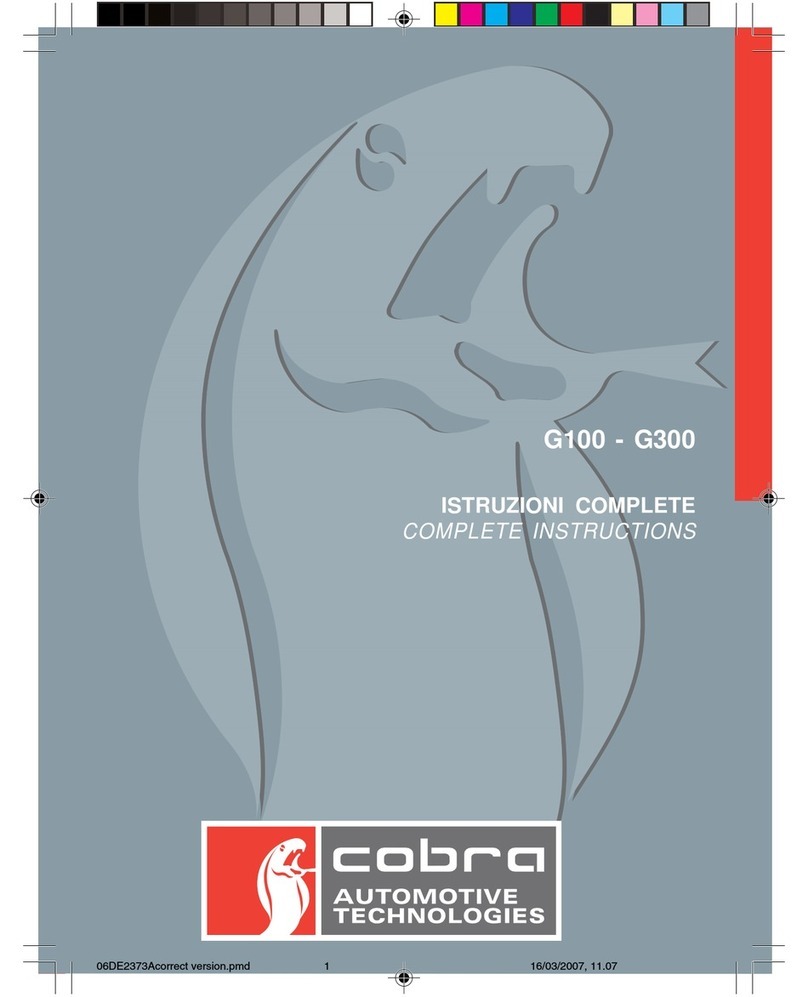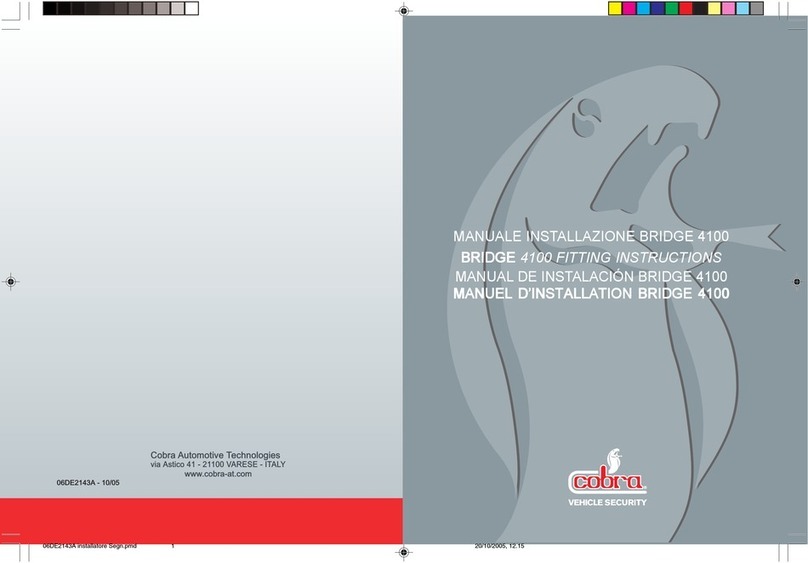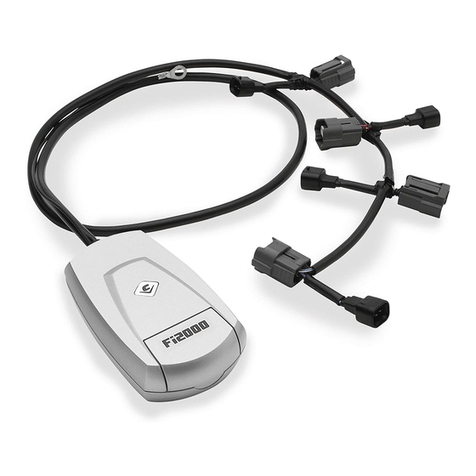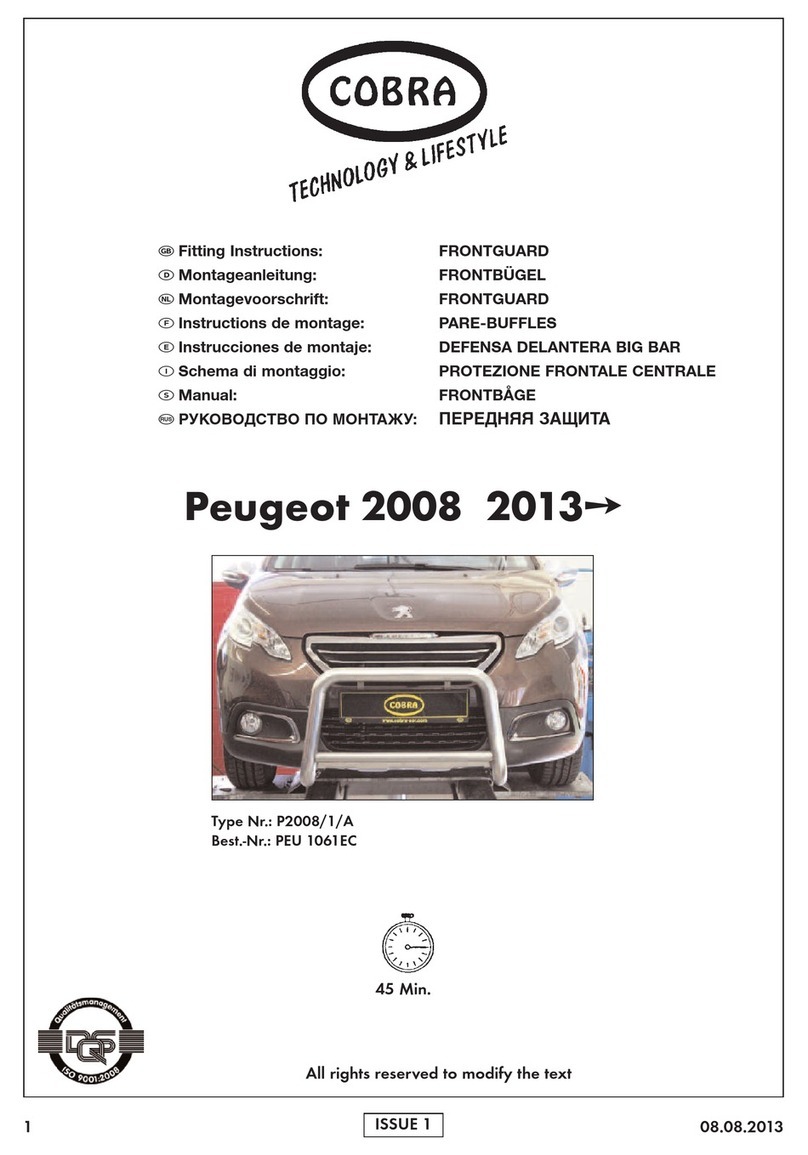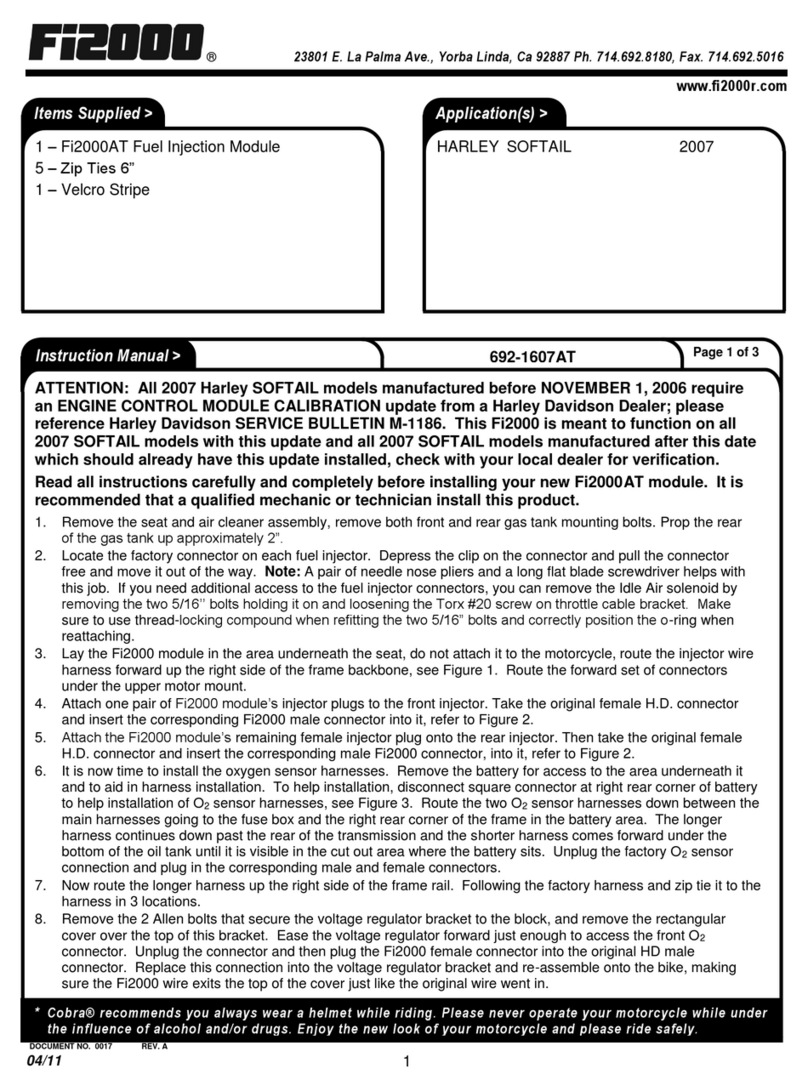
3. OPTIONAL: USING FUSE TAPS (sold separately)
3a. Make sure your vehicle is off and the key is not in the
ignition. Choose your desired fuse. You can verify if it is
switched or un-switched using a voltmeter. Make sure your
vehicle is off and the key is not in the ignition. Choose your
desired fuse. You can verify if it is switched or un-switched
using a voltmeter.
3b. Determine the fuse tap cable required for connection to your
fuse box. Where in doubt refer to the vehicle owner’s manual.
3c. Place the vehicle fuse in the fuse tap cable.
3d. Locate the input cable and connect the fuse tap cable to
hardwire kit and crimp as needed. Ensure connection is
secure.
3e. Insert the fuse tap into the fuse box and tuck away any
excess input cable behind the fuse box.
4. Make sure your vehicle is off and the key
is not in the ignition. Choose your desired
fuse. You can verify if it is switched or
unswitched using a voltmeter. Pull the fuse,
wrap exposed copper part of the red (+) wire
around the fuse tooth, and re-insert the fuse.
5. Locate a ground point near the fuse box.
There is usually either an obviously labeled
ground point or a nut/bolt that connects
directly into the car frame.
6. Enable power using the included
power supply box’s ON/OFF switch.
The power supply box should be left
inside the vehicle for easy access
and can be used to turn the system
off when storing the vehicle for
long periods of time. This kit’s low-
voltage protection will still protect
the battery even if the power supply
is left on.
3
FCC STATEMENT:
This device complies with Part 15 of the FCC Rules. Operation is subject to the
following two conditions:
(1) This device may not cause harmful interference, and
(2) This device must accept any interference received, including
interference that may cause undesired operation.
WARNING: Changes or modifications not expressly approved by the party responsible
for compliance could void the user’s authority to operate the equipment.
NOTE: This equipment has been tested and found to comply with the limits for a Class
B digital device, pursuant to Part 15 of the FCC Rules. These limits are designed to
provide reasonable protection against harmful interference in a residential installation.
This equipment generates uses and can radiate radio frequency energy and, if not installed
and used in accordance with the instructions, may cause harmful interference
to radio communications. However, there is no guarantee that interference will not occur
in a particular installation. If this equipment does cause harmful interference to radio or
television reception, which can be determined by turning the equipment off and on, the user
is encouraged to try to correct the interference by one or more of the following measures:
Reorient or relocate the receiving antenna.
Increase the separation between the equipment and receiver.
Connect the equipment into an outlet on a circuit different from that to which the
receiver is connected.
Consult the dealer or an experienced radio/TV technician for help.
Cobra Electronics Corporation
™
is a trademark of Cobra Electronics Corporation, USA.
This device complies with RSS-310 of Industry Canada. Operation is subject to the
condition that this device does not cause harmful interference.
CAN ICES-3B/NMB-3B.
TRADEMARK ACKNOWLEDGMENT
Cobra, and the snake design, are proprietary trademarks of Cobra Electronics
Corporation, USA. Other trademarks and trade names are those of their
respective owners.
Cobra Electronics Corporation
™
is a trademark of Cobra Electronics Corporation, USA.








